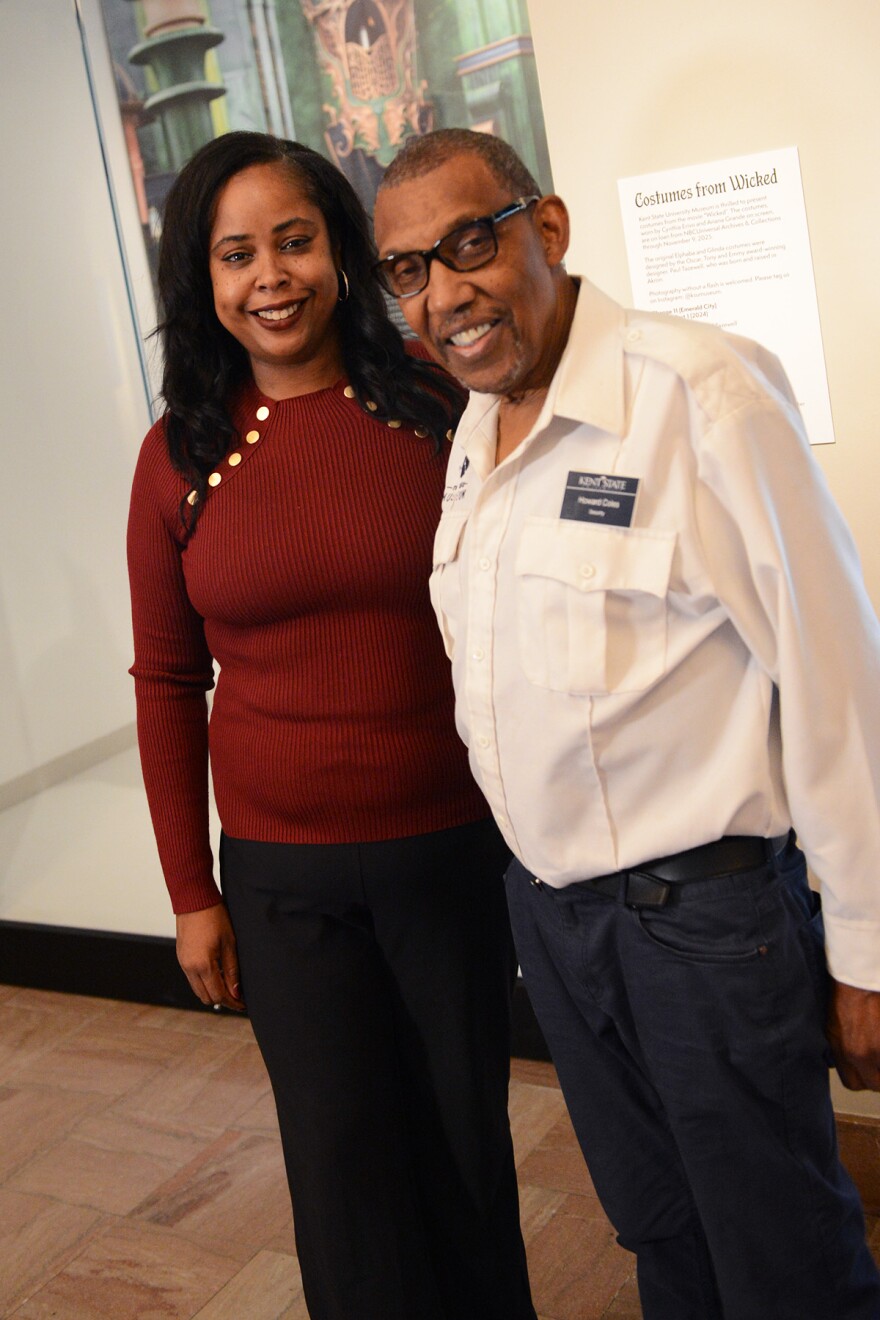Kent State University’s fashion school has long been recognized as one of the best in the country. But another institution right next door has been more of a well-kept secret: the Kent State University Museum, which holds a large collection of notable fashions.
“This museum is a world-class museum on a public university campus, and I love both of those aspects very deeply,” said Dr. Sarah Spinner, the museum's director. “But it's not very well known, either on this campus or within the broader arts and culture community in Northeast Ohio.”
With more than 30,000 objects ranging from the Byzantine period to present day, the museum is an incredible resource for research and learning, as long as people know it’s there.
“Really my goal is to take the ‘hidden’ out of ‘hidden gem,’” Spinner said.
Visitors can wander through the “Fashion Timeline,” a permanent and rotating exhibition of garments from the museum’s vast collection. Spanning two centuries of fashion history, each ensemble is placed in the context of political, social and cultural milestones to demonstrate how changes in society influenced the way people dressed.
“I always get someone saying, 'But where did you get all this from?’ And I always say, 'Our basement!’” Spinner said with a laugh. “Not exactly true, but from our collection."
Part of the collection is stored throughout several floors of the building while the rest resides in an offsite facility elsewhere on campus. The majority of objects are searchable in an online database on the museum’s website, from a stunning pink Christian Dior gown once worn by the actress Marlene Dietrich to Queen Victoria’s bloomers (which can be found in a cabinet labeled “Royal Accessories”).
Another lesser-known service is the museum’s research appointments for anyone who’d like to see an object or garment that might not currently be on view.
"We have students doing their honors theses with objects from our collection," Spinner said. “We also have researchers from across the country and world who write us on a regular basis and visit us in order to access the archive.”
Welcoming everyone
Since joining the museum in July 2024, Spinner said her focus has been expanding the museum’s engagement both across campus and the broader community, as well as increasing the amount of programming offered around its exhibitions.
The response has been enormous, she said.
“In my first year here, we've doubled visitorship and we're seeing increased visitorship every day,” Spinner said. “We're all seeing a real need for this type of platform, for this type of gathering place, and it's really inspiring our work every day.”
Another change is the way the museum hosts openings for new exhibitions. Instead of an invite-only guest list, the whole community gets an invitation via social media.

Two costumes from the film “Wicked” were recently displayed in the museum’s lobby and drew a large crowd, accompanied by a visit from the designer himself. Emmy, Tony and Oscar award-winning designer and Akron native Paul Tazewell visited fashion students in September and later spoke to a crowd of more than 600 people.
“Now when we invite people and advertise an opening, we actually have to cap the number of people we can take because we don't even have enough space for all the guests who want to celebrate,” Spinner said. “That's an incredible feeling working for a museum knowing that you're having that kind of impact.”
Bianka Hausknecht is the museum’s special assistant and sees the effects of these changes firsthand, not only in her daily work but also as a resident of Kent.
“I actually live within walking distance. And when I'd say where I work, there's a lot of people that would say, ‘Oh I didn't know you were here,’” Hausknecht said. “I feel like we're being seen more. People are realizing we're here, they want to come here and they want see what we have to offer.”
Community on campus
In her early days at the museum, Spinner propped open her office doors and invited students in for an event she called Donuts with the Director. It wasn’t just free pastries (what college student could resist?) but an informal opportunity for them to get to know more about Spinner and the museum.
“The most joy I get in my job is the opportunity to engage with students and to really understand what they're interested in, the issues that they're thinking about, and how we can use that to shape the future of the museum,” Spinner said.
Chloe Brosch, now a sophomore majoring in fashion merchandising, attended that first event and has been actively involved with the museum ever since. Recently, she’s worked with a handful of other students to create the Kent State Museum Society.
“Our first thought was, ‘How can we create a community for students here at the museum?’” Brosch said. “So, it's all about getting students involved … having students attend events, having students come to meetings, having them meet with designers. That's where the community starts.”
The Kent State University Museum is open six days a week. Admission is free for students, staff and faculty, and free to the public on Sundays.















